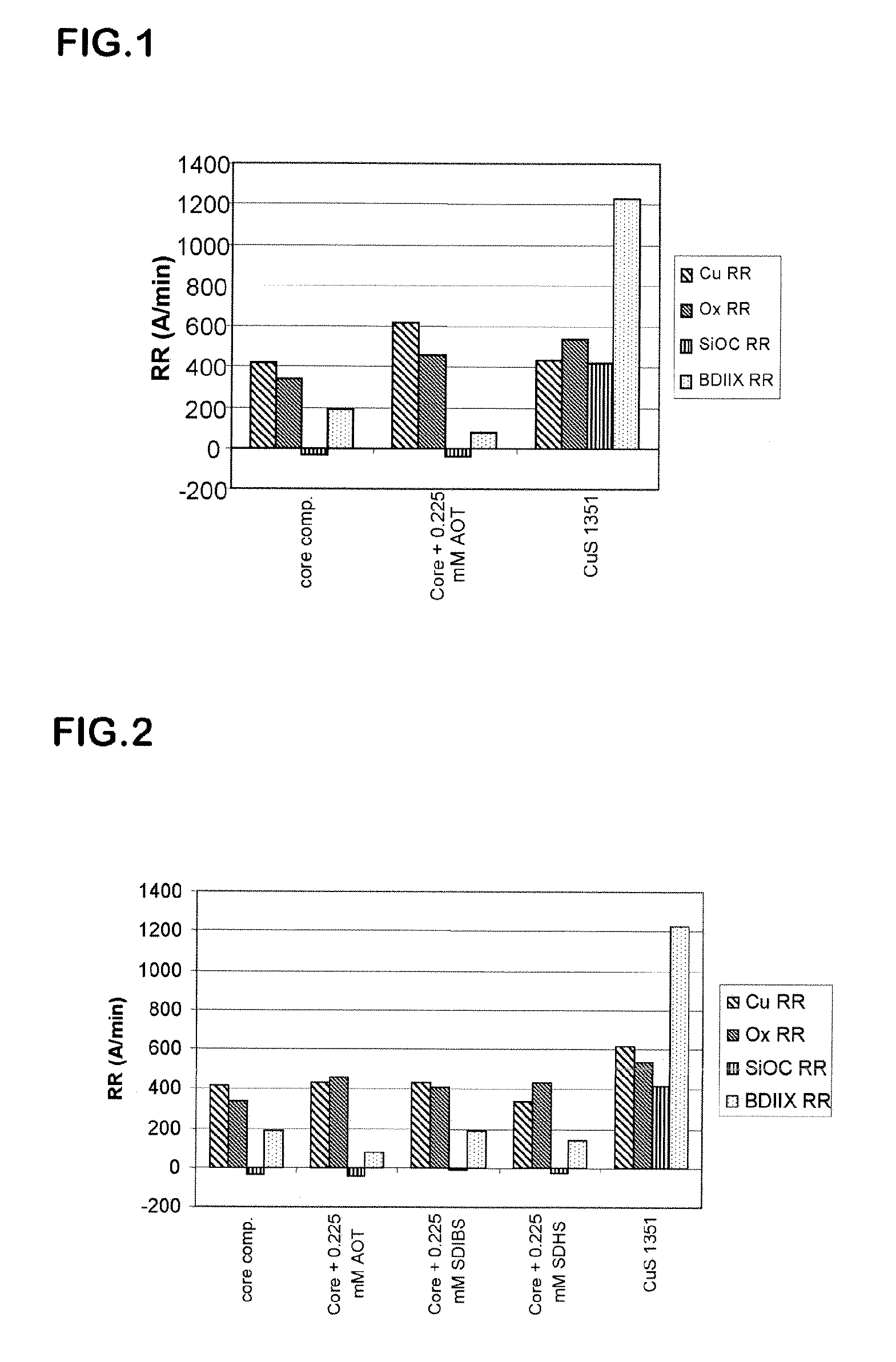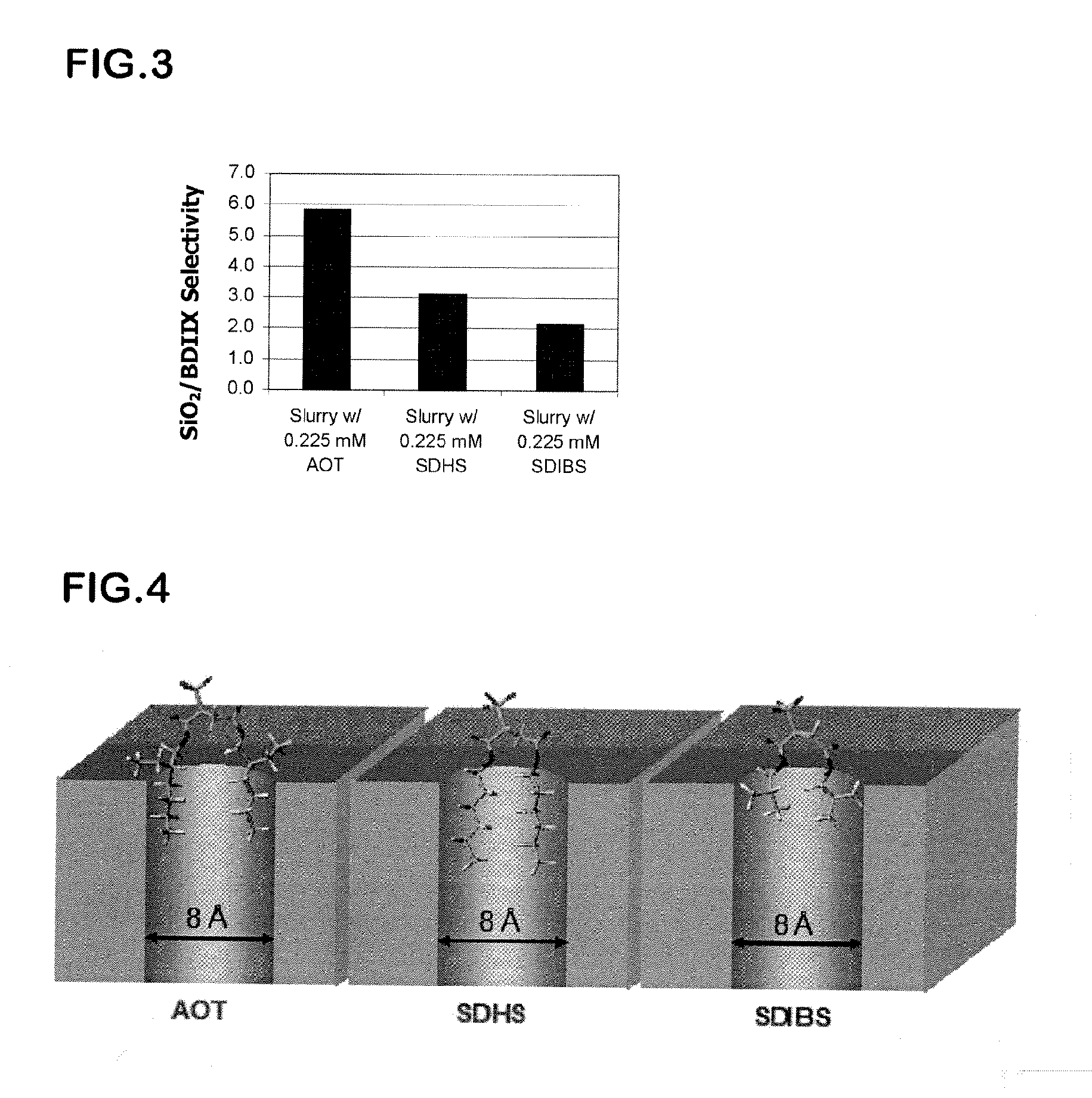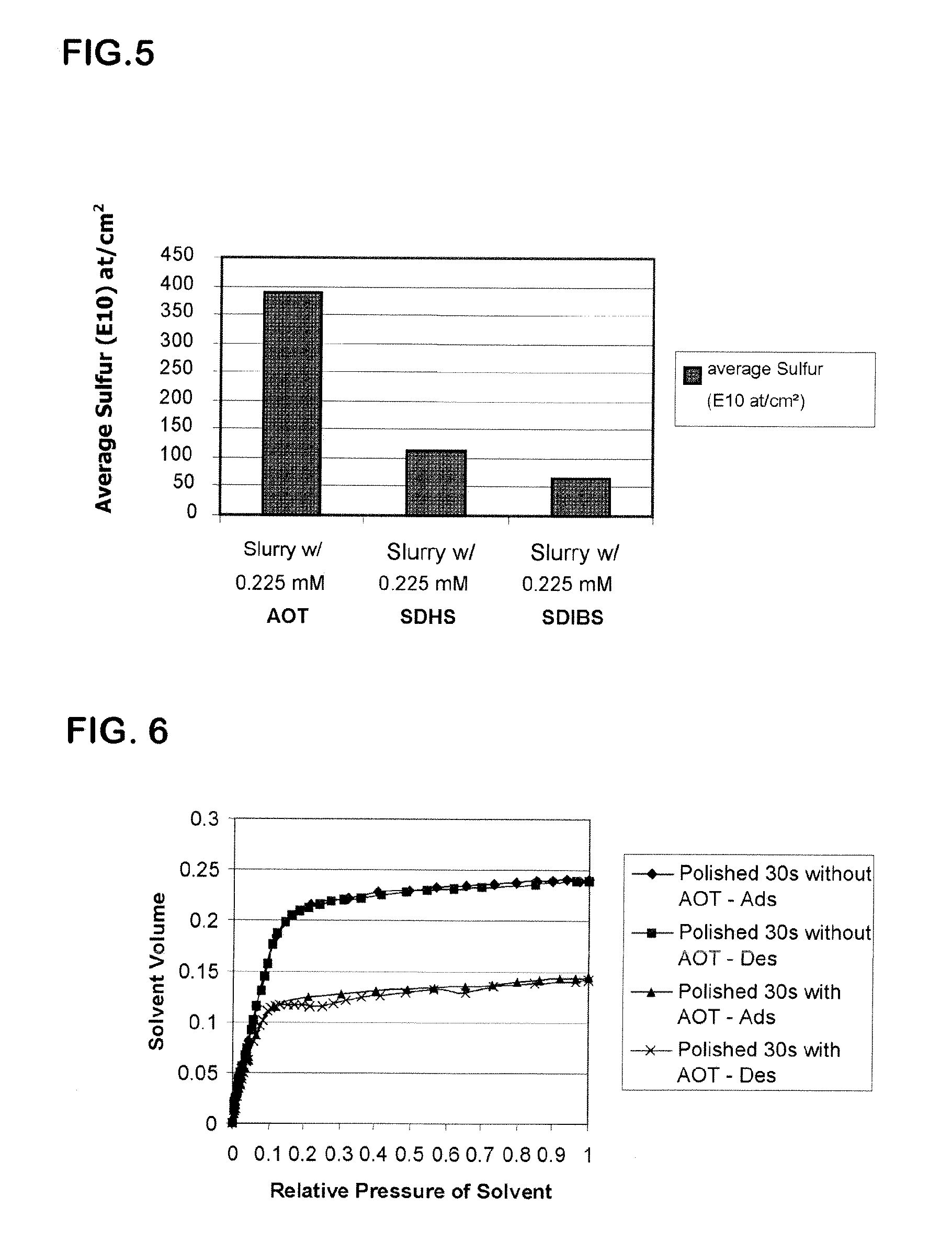Barrier slurry compositions and barrier cmp methods
- Summary
- Abstract
- Description
- Claims
- Application Information
AI Technical Summary
Problems solved by technology
Method used
Image
Examples
first embodiment
[0023]The “core” barrier slurry composition according to the first embodiment of the invention will now be described.
[0024]The core barrier slurry composition consists of the different following compounds dissolved in deionized water: an oxidizing agent, an abrasive, a complexing agent and, optionally, a corrosion inhibitor, at a pH which is not basic, i.e. which is 7.0 or below.
[0025]Appropriate and advantageous amounts of each component in the framework of the present invention are indicated in the appended claims.
[0026]The oxidizing agent can be selected from a variety of known oxidising agents, including: hydrogen peroxide, organic peroxides, persulfates, (per)iodates such as potassium iodate and periodate, bromates and perbromates, peroxodisulfates and perchlorates. The presently-preferred oxidizing agent is hydrogen peroxide. It has been found advantageous to use a concentration of oxidising agent, such as in particular of hydrogen peroxide, of at most 0.1% by weight with resp...
second embodiment
[0056]The second embodiment of the present invention will now be described with reference to FIGS. 2 to 9.
[0057]It has now been found that it can be advantageous to introduce a first additive into the core composition described above. In particular, it has now been found to be advantageous to make use of a first additive which is a surfactant (ionic or non-ionic) including a polar group, PG, and two major chains, X1 and X2. The two major chains X1 and X2 are either connected directly to the polar group PG or they are connected to a common carbon atom C (or carbon-containing group) which is itself connected to the polar group PG. The first additive has either the following first general formula:
or the following second general formula:
where:
PG is a polar group, for example a sulfate, a sulfosuccinate, a phosphate, an alkyl ammonium halide (the halide can be substituted by any other counter anion such as a sulfate, nitrate, phosphate, sulfite, nitrite, phosphate, etc.), a carboxylate, ...
third embodiment
[0093]The third embodiment of the present invention will now be described.
[0094]It has now been found that it can be advantageous to introduce a second additive into the core composition described above, either on its own or in association with the above-mentioned first additive. In particular, it has now been found to be advantageous to make use of a second additive which is selected from the family consisting of the salts of ammonia, sodium or potassium, advantageously the nitrates, sulphates or chlorides.
[0095]By adding the second additive to the core composition according to the first embodiment, so that the second additive is present at an amount of 0.1 weight percent in the final composition, it has now been found that it is possible to increase the removal rate of the barrier material (here TaN) obtained during barrier-CMP using the resultant composition, without significantly affecting the removal rates of SiO2 or copper. Advantageously, the salt added as a (second) additive...
PUM
 Login to view more
Login to view more Abstract
Description
Claims
Application Information
 Login to view more
Login to view more - R&D Engineer
- R&D Manager
- IP Professional
- Industry Leading Data Capabilities
- Powerful AI technology
- Patent DNA Extraction
Browse by: Latest US Patents, China's latest patents, Technical Efficacy Thesaurus, Application Domain, Technology Topic.
© 2024 PatSnap. All rights reserved.Legal|Privacy policy|Modern Slavery Act Transparency Statement|Sitemap



